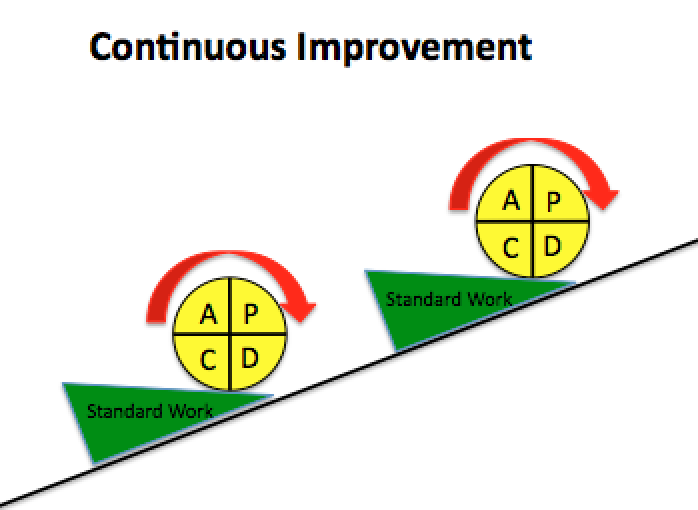Toyota Principle #6 – Standardized tasks are the foundation for continuous improvement and employee empowerment.

In a lot of ways I was lucky to begin my quest for Lean at the same time I began my quest for Statistical Process Control (SPC). My SPC mentors made it clear that one couldn’t drive out defects without first driving out process variation. That, of course, pointed straight to Standard Work.
Standardized Work – Most of you know that this term has a specific meaning within the Toyota Production System. It means work that is done the same way every time without deviation. Implied in Standard Work is that it is also completed at or below Takt Time.
Those who understand that concept know that, when you drive out variation (by doing the same job the same way every time), you also make it easier to identify and eliminate the cause(s) of defects. What may not be as obvious is that continuous improvement is also dependent on Standard Work.
In martial arts, frequently origin of Lean concepts, there is a three-phased teaching style called Shu-Ha-Ri. In the Shu phase, the student is trained by a master (Sensei) exactly how to perform the task: “Wax on; wax off.” The teacher oversees the student as the latter performs the task; the teacher correcting as necessary.
During the Shu the phase, the Sensei is responsible for the quality of the student’s work.
In the Ha phase, the the student is allowed to work on their own with periodic monitoring. The teacher continues to own the trainee’s performance – both time and quality – but the student is expected to continue to perform the job exactly as trained.
Finally, in the Ri phase, the student can perform the job perfectly without having to think. There is no oversight at this stage. The student if fully accountable for the quality and timing of their own work. Only at this stage is the student ready to suggest improvements to the process they have learned.
This methodology is important, as it teaches Standard Work. Only when the student has mastered Standard Work, are they qualified to Continuously Improve the work.
Like all of the Toyota Principles, Principle #6 is so impactful.
You hear people talk about continuous improvement, as if Standard Work is something that workers can improve willy-nilly, of their own volition. Not so!
Employees aren’t empowered to improve anything until they have reached the Ri phase of training. That means that they are masters of their own process before they can alter, or more properly, suggest alterations to, that process.
As pulling the Andon cord doesn’t stop the line, workers can’t change the process on their own. Each process has an owner (often the supervisor). Only the owner can change the process. Before they do, they must be convinced, usually by timed experiments, that the new process delivers better results. Moreover, the timed trials usually include all of the workers trained to perform the job.
Once a change to Standard Work is approved, the change must be documented and all the workers trained in the new standard. Again, the process (Standard Work) isn’t changed arbitrarily. There is a process to change the process.
Is the change process meant to be so arduous that no one ever changes it? Absolutely not, but everything is purposeful in continuous improvement, and it only begins when there is a standard.
This concept is the origin of the oft quoted Taiichi Ohno statement: “Where there is no standard, there can be no Kaizen (READ: continuous improvement).”
We do well to meditate on that.

